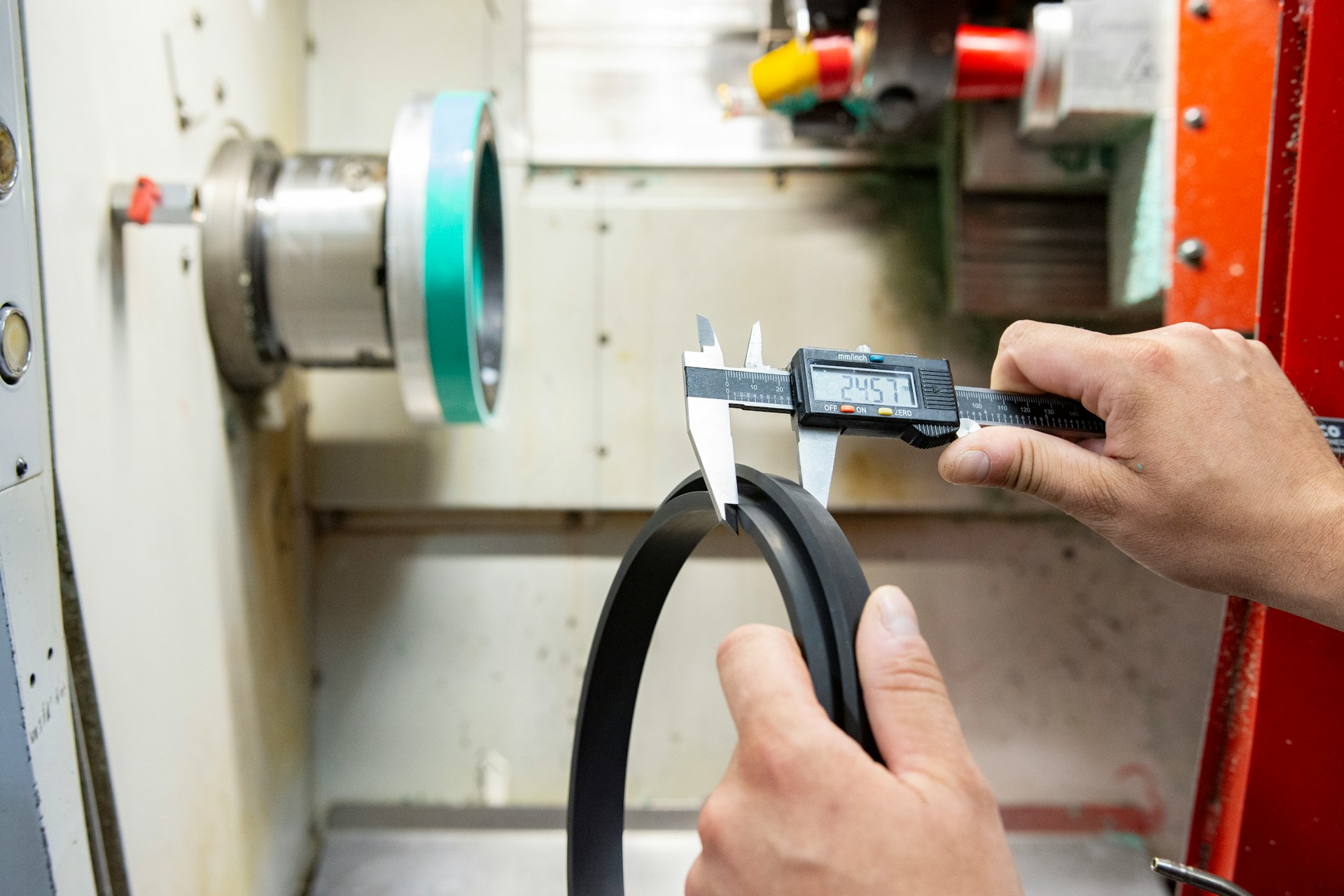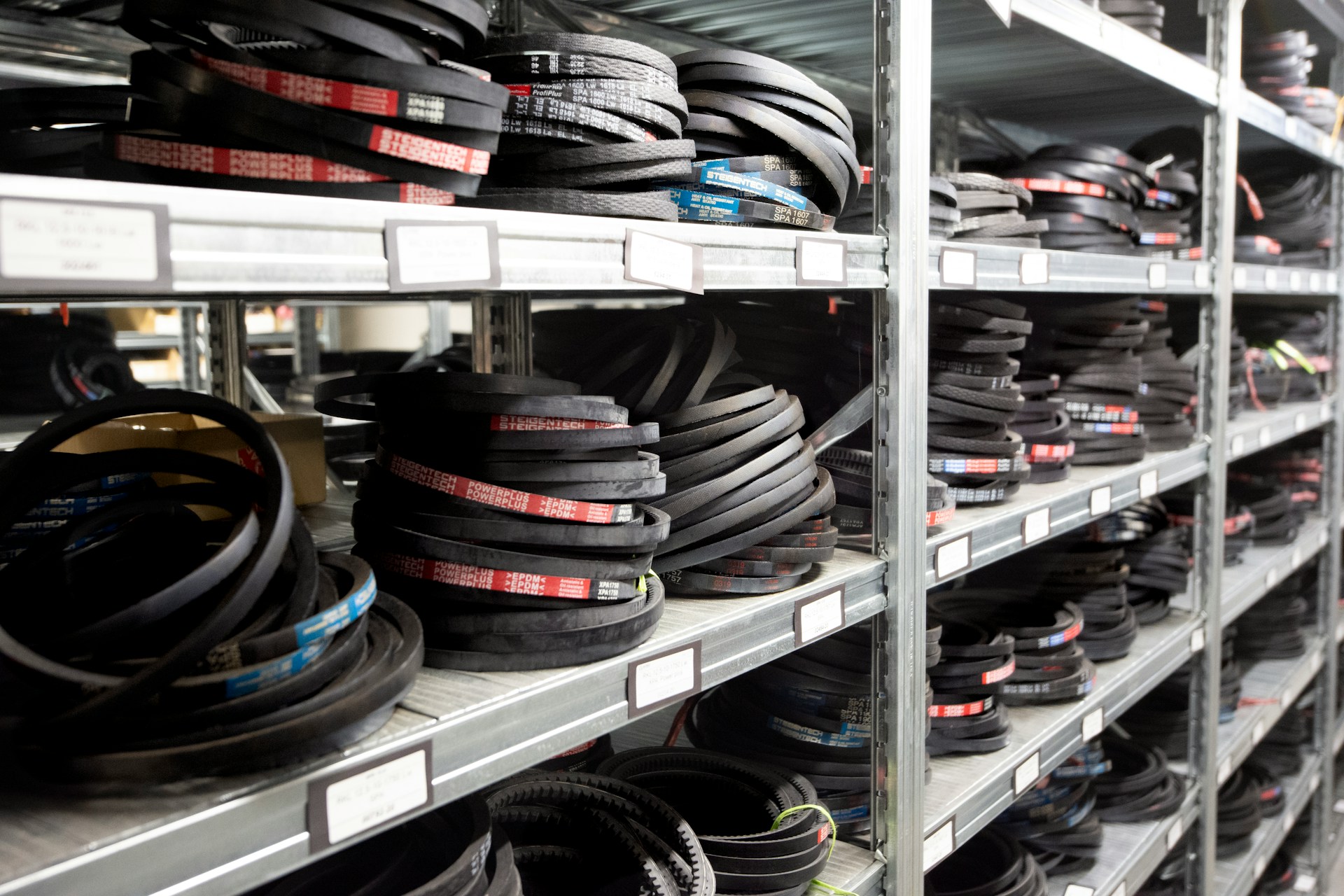
Types of Gaskets and Their Uses in Different Industries
Gaskets are crucial components in many industrial applications, providing a reliable seal between two or more surfaces.
They play a vital role in preventing leaks, protecting equipment, and ensuring the smooth operation of machinery. However, not all gaskets are created equal, and there are various types designed for different purposes.

In this blog post, we’ll explore the most common types of gaskets used in different industries, their unique characteristics, and their specific applications. Whether you’re a professional engineer or someone interested in learning more about gaskets, this post will provide valuable insights into the world of gasket technology. Here are some of the most commonly used gaskets:
Spiral Wound Gaskets
Spiral wound gaskets are one of the most versatile types of gaskets and are widely used in various industries. In line with gaskets manufacturers, spiral wound gaskets consist of a V-shaped metal strip and softer filler material, usually graphite or PTFE, wound together in a spiral pattern. The outer portion is made of a solid metal ring, providing structural support to the gasket.
Spiral wound gaskets can withstand high pressure and temperature, making them ideal for applications in the oil and gas industry, chemical processing, and power generation. They are also suitable for use in flanges with irregular or damaged surfaces, providing a secure seal and preventing leaks. Furthermore, their ability to handle varying pressures and temperatures makes them a popular choice in critical sealing applications.
Ring Joint Gaskets
Ring joint gaskets, also known as RTJ gaskets, are commonly used in high-pressure applications such as oil and gas pipelines, valves, and wellheads. These gaskets consist of a metallic ring with an octagonal or oval cross-section and are designed to fit into machined grooves on flanges.
Ring joint gaskets provide a tight and secure seal, making them suitable for environments with high pressures and temperatures. They can withstand extreme conditions, including corrosion, thermal cycling, and vibration, without losing their sealing capabilities.
Additionally, they are reusable and can be easily removed and reinstalled when necessary. Due to their robust design and durability, ring joint gaskets are an excellent choice for critical operations in the oil and gas industry.
Camprofile Gaskets
Camprofile gaskets, also known as grooved metal gaskets, are a combination of a metallic core and a soft filler material. The metal core has concentric serrations on both sides, while the filler material is usually graphite or PTFE. These gaskets are commonly used in flanged joints and are suitable for high-temperature and high-pressure applications.
The unique design of camprofile gaskets allows them to maintain their sealing capabilities even under extreme conditions, making them ideal for use in the oil and gas, chemical processing, and power generation industries. They also offer excellent resistance to chemicals and can handle frequent thermal cycling without losing their sealing performance.
Additionally, they are easy to install and can be reused multiple times, making them a cost-effective choice for industries with high-demanding applications.
Non-Asbestos Gaskets
Non-asbestos gaskets were developed as an alternative to traditional asbestos-based gaskets due to the health concerns associated with asbestos exposure. These gaskets are made from synthetic fibers, such as aramid, and a non-asbestos filler material, such as graphite or PTFE. They offer excellent resistance to heat, chemicals, and pressure and are suitable for various industrial applications.
Non-asbestos gaskets are commonly used in the automotive industry for engine seals, in the food and pharmaceutical industries for hygienic seals, and in the petrochemical industry for sealing flanges and pipes. They are also preferred for their environmental friendliness and compliance with regulations regarding asbestos use.
Rubber Gaskets
Rubber gaskets are made from natural or synthetic rubber materials and are a popular choice for low-pressure applications. These gaskets have excellent flexibility and can easily conform to irregular or damaged surfaces, providing a secure seal. Rubber gaskets are commonly used in plumbing systems, water treatment plants, and electrical enclosures, among others.
They offer good resistance to corrosion and chemicals and can handle a wide range of temperatures, making them suitable for various industries. Additionally, rubber gaskets are cost-effective and have good sealing capabilities, making them an ideal choice for non-critical applications.

Metal Jacketed Gaskets
Metal jacketed gaskets are the go-to choice for sealing joints in piping systems with extreme temperatures and pressures. These gaskets consist of a soft filler material, such as graphite or PTFE, encased within a metal jacket made of materials like stainless steel or copper. The metal jacket provides structural integrity to the gasket, while the filler material offers excellent sealing capabilities.
Metal jacketed gaskets are commonly used in the chemical and petrochemical industries, as well as in power plants and refineries. They offer superior resistance to corrosive environments and can handle thermal cycling without losing their sealing performance. Additionally, they are highly durable and can be used in critical applications where safety and reliability are of the utmost importance.
Gaskets play a crucial role in ensuring the proper functioning of various industries. From high-pressure and high-temperature applications to more moderate environments, there is a type of gasket designed for every need. Whether it’s spiral wound gaskets with their versatility or metal jacketed gaskets with their durability, each type offers unique characteristics to suit different requirements. It’s essential to understand the specific properties and applications of each gasket type to choose the most suitable one for a particular industry. With advancements in technology, we can expect to see even more innovative gaskets being developed and used in various industries in the future.








